#national civil rights museum
Link
3 notes
·
View notes
Text
"I can report that my second time in the NCRM was less emotional — probably because I knew what to expect — but also because I was trying to see the exhibits through the eyes of my children.
It did not take very long before one of my kids started asking the kinds of questions that make America’s history sound so stupid."
My kids asked all of the questions I’d want them to ask, and they all started with “Why?” and frankly, I didn’t have a worthy response to any of their questions. I have had those questions for years myself. But I was proud of them for recognizing and voicing their concerns and asking about and appreciating the history on display. My kids get it and for that, I’m happy and proud."
#Memphis Tennessee#National Civil Rights Museum#Lorraine Motel#Teach Your Children Well#America's Racist History#Memphis TN#Rev. Martin Luther King Jr.#Confronting The Past#Understanding History#fighting ignorance#fighting fear#fighting misinformation#Love Thy Neighbor#Civil Rights Movement
2 notes
·
View notes
Photo
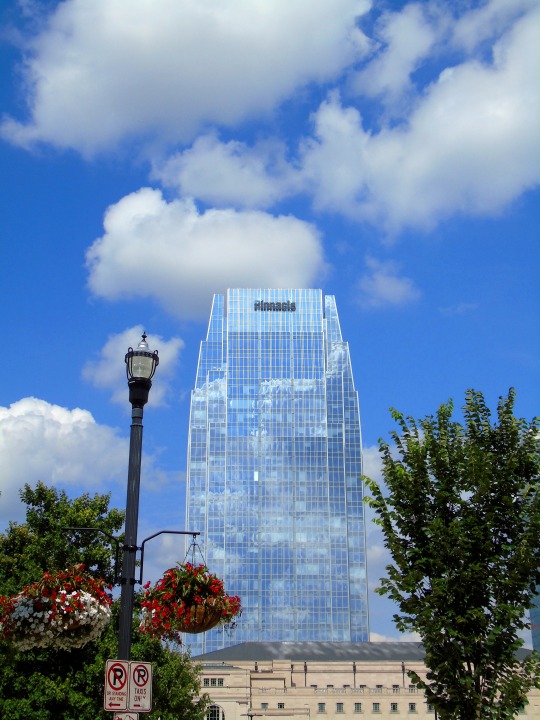



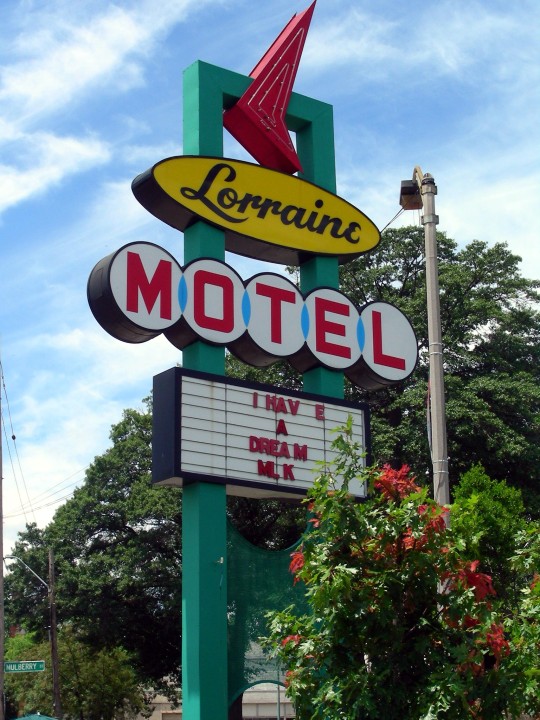

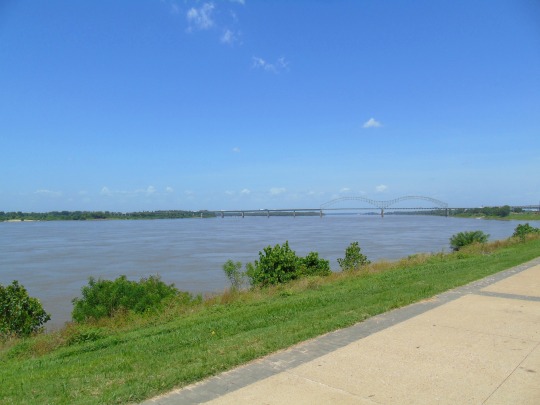

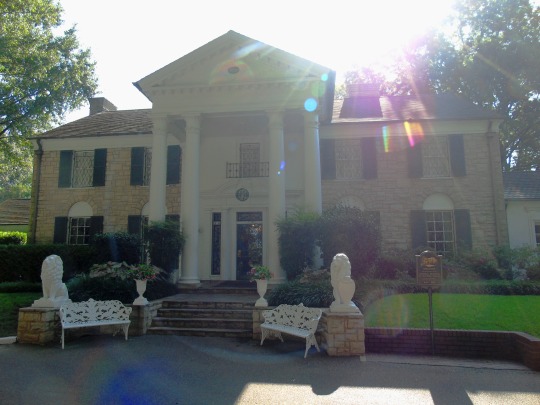

American Civil War: Tennessee seceded from the Union on June 8, 1861.
#Cumberland River#John Seigenthaler Pedestrian Bridge#Nashville#Memphis#Pinnacle at Symphony Place#Chief John Ross Bridge#Tennessee River#USA#Chattanooga#Chattanooga Choo Choo#Mississippi River#summer 2016#travel#architecture#cityscape#tourist attraction#landmark#vacation#National Civil Rights Museum#Beale Street#American Civil War#Tennessee#seceded#8 June 1861#anniversary#US history#US Civil War#original photography
2 notes
·
View notes
Text
Martin Luther King Jr: Lightness of love
“Darkness cannot drive out darkness: only light can do that. Hate cannot drive out hate: only love can do that.”
—Martin Luther King Jr.
Martin Luther King, Jr. (Photo credit: Wikipedia)

View On WordPress
0 notes
Text
Shogan Announces Plans for Permanent Emancipation Proclamation Display 📜

On Saturday, June 17, 2023, Archivist of the United States Dr. Colleen Shogan was honored to announce that the National Archives intends to place the Emancipation Proclamation on permanent display inside the Rotunda, joining our nation's foundational documents alongside the Declaration of Independence, the Constitution, and the Bill of Rights.
Dr. Shogan made the special announcement on Saturday just before General Orders No. 3 and the Emancipation Proclamation went on public display through June 19.
The National Archives will begin an assessment to determine the best display environment, considering the condition and importance of the original document.
The current plan for display calls for showing one side of the Emancipation Proclamation, a double-sided five-page document, alongside facsimiles of the reverse pages. The original pages on display will be rotated on a regular basis to limit light exposure.
Watch the full announcement on our Instagram page: https://www.instagram.com/p/CtmMzyjAUmR/?hl=en
Learn about the Emancipation Proclamation and General Order No. 3:
https://museum.archives.gov/featured-document-display-emancipation-proclamation-and-juneteenth
159 notes
·
View notes
Text






Atlanta, Georgia
August 24-28, 2024
Pasofino Dance Social.
Daily Burger and Andouille Corn Pups at Farm Burger.
National Center for Civil and Human Rights.
The King Center.
Georgia Aquarium.
"Tyler Mitchell: Idyllic Space" exhibit at High Museum of Art.
Photo Credit: karmaalwayswins
#atlanta#high museum of art#tyler mitchell#georgia aquarium#the king center#farm burger#national center for civil and human rights#pasofino dance#salsa dancing#social dancing#martin luther king jr#not sure how to tag my own posts at this point
0 notes
Text
History in my Backyard -Springfield, IL
Illinois’ capital city is full of reasons to visit. There are the Route 66 stops, plus all the government draws, but for me, the biggest pull in this Land of Lincoln is the history! While I have lived outside the city all of my adult life, I have learned I have not done, and seen it all! Hosted by Visit Springfield the last weekend in June, my husband Keith and I enjoyed a visit downtown and…
#16th president#Abraham Lincoln#Abraham Lincoln Presidential Museum#ALPLM#Arlington National Cemetery#author#black history#Charlie Parkers#Civil Rights#Dr. Gina Lathan#Dr. Stacy Grundy#Edwards Place#Edwards Place Historic Home#Elijah Iles House#Flag Lowering Ceremony#funeral train#Governor&039;s mansion#historial sites#history#History Comes alive#History Cooks#Ice Cream Social#Illinois Capital city#Illinois State Fairgrounds#Illinois State Military Museum#Illinois Veteran&039;s Memorials#Inn at 835#Kaitlyn Pottier#land of lincoln#Lincoln Across Bordwers
0 notes
Text
My First Civic Season
Civic Season is the time period between Juneteenth and July 4th, uniting our oldest federal holiday with our newest, mobilizing a movement to understand our past and shape our future. Have you heard about the movement?
Photo by Element5 Digital on Pexels.com
My sister and I love to visit historical sites and museums and take random road trips across the country to learn and celebrate history with a hands-on approach. It’s no surprise that two sisters who work in education get a kick out of learning for fun in their free time. However, it was a surprise that we had not heard about Civic Season until this year’s…
#4th of July#Civic Season#Civil Rights Act#democracy#Elections#freedom#Independence day#Japanese American National Museum#July 4th#Juneteenth#life#Project 2025#Roe v Wade#Voting#Writing
0 notes
Text
A Day in Memphis

View On WordPress
#Family TRavel Memphis#Memphis#Memphis Zoo#MoSH Memphis#Motel Lorraine#National Museum of Civil Rights
0 notes
Text
Further reading:
HKFP: Hong Kong’s John Lee warns against ‘soft resistance’ as pomp, patriotism replace protests on Handover anniversary, July 1, 2023
#news#politics#Civil Human Rights Front#protest#John Lee#China#immigration#Hong Kong Liaison Office#poltical repression#Victoria Park#Hong Kong Palace Museum#hong kong national security law#UN human rights committee#Chris Tang#Xi Jinping#Hong Kong#hong kong free press#HK Leisure and Cultural Services Department
0 notes
Text

From all of us at JSTOR, happy Black History Month!
The profound impact of African American writers, artists, politicians, and academics, along with countless others, is indelibly etched into the fabric of American history–and we'll be highlighting them all month long.
Image credit:
Fink, Larry (1941-2023). Malcolm X, Rally for Birmingham, Harlem, NY, May, 1963. 1963, printed 2019. Archival pigment print, 22 x 17 in. (55.88 x 43.18 cm).
Levy, Mark. Mississippi Freedom Summer 1964. 1964. Queens College Special Collections and Archives.
Borg, Erik. Toni Morrison. August 26, 1977.
Lisa Kuzia. Angela Davis. 1980-1985. Black and white photography, 4 3/4 x 3 3/4 in. Special Collections and Archives, Colby College Libraries, Waterville, Maine.
Padow-Sederbaum, Phyllis. Junior NAACP Demonstration. 1963. Queens College Special Collections and Archives.
Allied Printing Trades Council. Placard from Memorial March Reading “HONOR KING: END RACISM!” 1968. National Museum of African American History and Culture; On View: NMAAHC (1400 Constitution Ave NW), National Mall Location, Concourse 1, C1 053; Collection of the Smithsonian National Museum of African American History and Culture.
Created by C. M. Battey, American. W.E.B. Du Bois/. 1918. Silver and photographic gelatin on photographic paper. National Museum of African American History and Culture; Collection of the Smithsonian National Museum of African American History and Culture.
Mosley, John W. Civil Rights Demonstrators at Girard College. Philadelphia PA: Temple University Libraries, 1965-07-17. Charles L. Blockson Afro-American Collection.
1K notes
·
View notes
Link
The National Civil Rights Museum is celebrating the Juneteenth holiday on June 19 as a Community Day with free museum admission and museum Member Appreciation Day.
13 notes
·
View notes
Text
During the first six months of the current war on Gaza, the Israeli military destroyed about 60 percent of the Strip’s cultural heritage sites and monuments. This toll includes the Bronze Age settlement of Tell el-‘Ajjul, the St. Hilarion monastery founded nearly 1,700 years ago, and Pasha’s Palace built in the 13th century and used recently as an archaeological museum. According to many Palestinian and civil rights organizations, this destruction is deliberate.
I’m an archaeologist living in the West Bank who has written about cultural heritage destruction and antiquities looting. I serve as the secretary general of the International Council on Monuments and Sites–Palestine and of the Society for Palestinian Archaeology. Over 34 years, I have conducted several research projects and interviewed hundreds of Palestinians involved in illegal looting, trading, and trafficking of ancient objects.
The losses unfolding now in Palestine, however, are unprecedented in scale and speed.
International agreements enshrine the protection of cultural heritage and recognize its destruction as a war crime. But agencies responsible for policing these agreements have been conspicuously and inexcusably absent from the current conflict.
No doubt protecting historical monuments and archaeological sites is challenging amid a war, and humanitarian efforts should prioritize saving lives. Yet UNESCO and other heritage organizations have tools and tactics to deter the destruction of cultural assets in conflict zones.
Why, then, are these organizations neglecting to protect cultural heritage in Palestine?
[...]
According to Resolution 242, passed by the United Nations Security Council in 1967, the Palestinian territories, which include the West Bank, East Jerusalem, and the Gaza Strip, are under occupation. As the occupying power, Israel must take necessary measures to safeguard and protect the cultural and natural heritage of the Palestinian territories.
During its 2023–2024 assault on Gaza, Israel has been credibly accused of doing the opposite: systematically destroying Gaza’s cultural heritage as part of its broader genocide of Palestinians in Gaza.
As of February, Israeli forces have destroyed at least 200 archaeological sites and buildings of cultural and historical significance in the Gaza Strip, according to a report from the Palestinian Ministry of Culture.
6 June 2024
642 notes
·
View notes
Text














American Civil War: Tennessee seceded from the Union on June 8, 1861.
#Appalachian Mountains#Great Smoky Mountains#Cumberland River#John Seigenthaler Pedestrian Bridge#Nashville#Memphis#Pinnacle at Symphony Place#Chief John Ross Bridge#Tennessee River#USA#Chattanooga#Chattanooga Choo Choo#Mississippi River#summer 2016#travel#architecture#cityscape#tourist attraction#landmark#vacation#National Civil Rights Museum#Beale Street#American Civil War#Tennessee#seceded#8 June 1861#anniversary#US history#US Civil War#original photography
1 note
·
View note
Text
Until she fled Bangladesh on Monday, Prime Minister Sheikh Hasina governed as if she still had full legitimacy, even as students and protesters had been on the streets for days asking her to resign. The trigger for the demonstrations—civil service job quotas for Bangladeshi freedom fighters and their families—had become a distant memory. Collective anger about years of human rights abuses, corruption, and rigged elections had coalesced into an uprising.
In a conversation over the weekend, Zonayed Saki, the left-leaning leader of the Ganosamhati Andolan party—himself a student activist against military rule in the 1990s—said, “The people’s sentiment is that she has to go first. The government had lost moral and political legitimacy.”
Hasina believed that she was elected democratically. She won an unprecedented fourth term in a flawed vote in January, which most of the major opposition parties had boycotted and the United States, the United Kingdom, and human rights groups criticized for not being free or fair. Still, other major governments congratulated Hasina on the victory. The bureaucracy, the media, the police, and the army were on her side. What could go wrong?
Over the weekend, Hasina declared a curfew again, cut off the internet, and encouraged the youth wing of the ruling Awami League party to take to the streets. Trigger-happy security forces, who were blamed for the deaths of more than 200 people as the protests turned violent in mid-July, were out in full force. Nearly 100 more people died over the weekend, including 14 police officers; video emerged showing security forces shooting point-blank at nonviolent protesters.
Hasina spoke darkly of Islamists spreading terrorism by co-opting the protests, but the students remained undeterred. A long march was announced for Aug. 5 to demand her resignation. Hasina declared a three-day public holiday in response. But by midday Monday, she had resigned, fleeing the country in a helicopter. The first stop would be India and after that an unknown destination.
Meanwhile, the situation on the ground has turned volatile amid the power vacuum. Thousands of demonstrators rushed to the Ganabhaban, the prime minister’s official residence in Dhaka, looting souvenirs and frolicking on the premises. People have also reportedly attacked the home of Bangladesh’s chief justice. There are also reports of the toppling of a statue of Hasina’s father, Sheikh Mujibur Rahman, who led Bangladesh’s independence movement and then ruled the country until he was assassinated in 1975. Mujib’s family home, now a museum, went up in flames in an act of grotesque retribution. These incidents stand in contrast to the disciplined and peaceful demonstrations led by students, who have urged for calm and were seen appealing to the looters to return stolen property.
Bangladesh’s army has called for calm, but it has not yet intervened. The country’s armed forces overthrew elected governments in the 1970s and 1980s and attempted coups in later years. But now, the generals would naturally want to play it safe: They cannot afford to lose the confidence of Bangladeshis and are aware of the deep distrust that Bangladeshis have developed for the armed forces because their political interventions have weakened the country’s democracy.
There is another calculation at play, too: Bangladesh is among the largest suppliers of soldiers to the United Nations peacekeeping forces, and it won’t antagonize the international community by letting its soldiers act at will. (Those peacekeeping arrangements mean the armed forces are less reliant on Bangladesh’s state budget.) In mid-July, when military vehicles with U.N. insignia were deployed on Dhaka’s streets, foreign diplomats rightly complained; Bangladeshi officials gave weak excuses and promised not to use U.N. equipment to settle domestic unrest.
Hasina seemed to have two options: to seek a graceful exit or to dig her heels in and let the troops take all necessary means to protect her regime. In the end, she fled. Where she will settle is unclear. India would pose problems for Prime Minister Narendra Modi; ruling party politicians have routinely criticized undocumented Bangladeshis in India, even creating legislation to identify and possibly deport them. The United Kingdom may be risky for Hasina because while it hosts many Bangladeshi immigrants, they include dissidents forced into exile during her 15-year rule as well as supporters of the opposition Bangladesh Nationalist Party.
Had Hasina dug in, there would have been bloody consequences. Even if the army had shown restraint toward the protesters, there is no telling if Bangladesh’s notorious border guards or the Rapid Action Battalion—which has faced criticism from human rights groups—would have acted responsibly. There has been violence on both sides, but it has come primarily from the Bangladeshi state. As of Monday, as many as 32 children had died, according to UNICEF.
By stepping aside disgracefully, Hasina leaves chaos in her wake. It is crucial that any interim administration restore order quickly, but it can only do so if it has the backing of the army. A list of bureaucrats, civil society veterans, and others who might form the nucleus of such a government has been released, but the situation is too fluid to consider such lists final. In the early 2000s, Bangladesh had an unelected but legitimate caretaker government to help assist its transition to democracy after a military intervention—which it did, paving the way for Hasina’s election in December 2008.
Hasina has long demonized Bangladesh’s Islamist political forces. But Islamic fundamentalist parties have secured more than 10 percent of the vote only once, in 1991; in all subsequent elections, their vote share has been closer to 5 to 6 percent. Most Bangladeshis are Muslims, but they aren’t extremists; in Bangladeshi American poet Tarfia Faizullah’s famous words, when a Pakistani soldier assaulted a Bengali woman in 1971 and asked her if she was Muslim or Bengali, she defiantly said, “Both.”
The song accompanying many videos of the protests last week was from the pre-Partition poet Dwijendralal Ray, a Hindu, celebrating the golden land of Bengal. To see Bangladesh in binary terms—of Muslim or not Muslim—shows a profound misreading of a complex society. It reveals the myopia of external observers, notably analysts close to the current Indian government, who had invested hugely in Hasina and irrationally fear that an Islamic republic is the only alternative to her rule. In so doing, they frittered away some of the goodwill that India had earned in Bangladesh over the years, particularly for its support during the liberation war.
As a result, the current situation in Bangladesh will complicate things for Modi, Hasina’s close friend. His government had invested hugely in their relationship, aiming to build a trade corridor across Bangladesh and seeking Bangladeshi support to curb separatism in northeastern India. This alienated India from Bangladeshis, who expected New Delhi to defend democratic forces in Dhaka. Nobel laureate Muhammad Yunus, whom Hasina condemned and called a “bloodsucker of the poor,” chided India for not doing enough: South Asia is a family, he said in a recent interview, and when a house is burning, brothers should come and help.
With Hasina fleeing, India has lost an ally it thought it could rely on. The road ahead for Bangladesh will be difficult. Expectations will be high, and the people will want early elections. If those are free and fair, a different Bangladesh can emerge. Whether it will be consistent with the liberal, secular, democratic ethos that Bangladesh’s founders fought for remains to be seen.
102 notes
·
View notes
Note
Since youre antifascist, how about you give us a definition of fascism? What exactly makes someone a fascist? (and in case you use terms such as left-wing or right-wing be sure to define them too)
Guess it's been a while since a clever Anon challenged us to define fascism, huh? Right, let's get into it:
Via the United States Holocaust Memorial Museum:
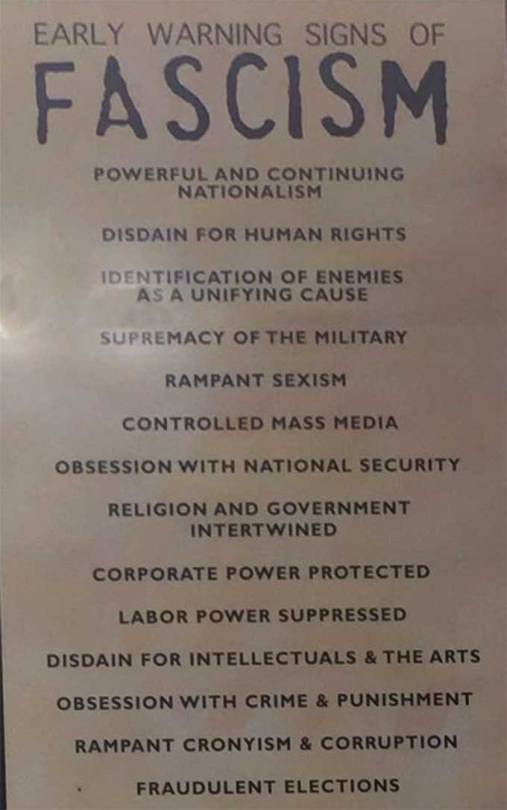
Yale professor Jason Stanley:
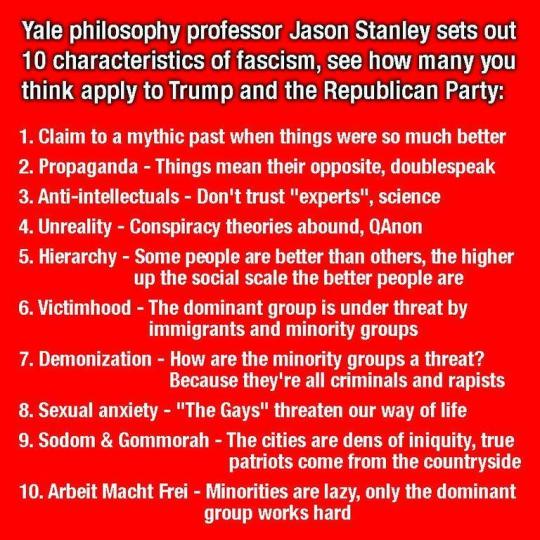
“Fascism is a creation of race hatred and its politically organized expression.” - Willhelm Reich, The Mass Psychology of Fascism (1933).
“Fascism is capitalism plus murder.” - Upton Sinclair
“Repression by brute force is always a confession of the inability to make use of the better weapons of the intellect — better because they alone give promise of final success. This is the fundamental error from which Fascism suffers and which will ultimately cause its downfall…that its foreign policy, based as it is on the avowed principle of force in international relations, cannot fail to give rise to an endless series of wars that must destroy all of modern civilization requires no further discussion. To maintain and further raise our present level of economic development, peace among nations must be assured. But they cannot live together in peace if the basic tenet of the ideology by which they are governed is the belief that one’s own nation can secure its place in the community of nations by force alone. ” - Ludwig von Mises, Liberalism: A Socio-Economic Exposition (1927).
“Spent most of the day reading fascisti leaflets. They certainly have turned the whole country into an army. From cradle to grave one is cast in the mould of fascismo and there can be no escape … It is certainly a socialist experiment in that it destroys individuality. It destroys liberty.” - Harold Nicolson, The Harold Nicolson Diaries : 1919-1964 (2004).
“The liberty of a democracy is not safe if the people tolerated the growth of private power to a point where it becomes stronger than the democratic state itself. That in its essence is fascism: ownership of government by an individual, by a group, or any controlling private power.” - Franklin D. Roosevelt
“A fascist is one whose lust for money or power is combined with such an intensity of intolerance toward those of other races, parties, classes, religions, cultures, regions or nations as to make him ruthless in his use of deceit or violence to attain his ends….If we define an American fascist as one who in case of conflict puts money and power ahead of human beings, then there are undoubtedly several million fascists in the United States.” - Henry A. Wallace
“Fascism is the cult of organised murder, invented by the arch-enemies of society. It tends to destroy civilization and revert man to his most barbarous state. Mussolini and Hitler might well be called the devils of an age, for they are playing hell with civilization.” - Marcus Garvey, Authors take Sides on the Spanish War, 1937
Philosophy Tube's breakdown of the elements of fascism is very thorough and recommended if you're not the reading type.
But do you read books? We hope so if you're looking to engage in political discussion about anything. Here are some books that tackle the definition of fascism, in whole or in part, that we would recommend to you (check/order from your local library!)
Mark Bray's highly-accessible Antifa: The Anti-Fascist Handbook is a great starting point for this topic.

Columbia history professor Robert O. Paxton's excellent book The Anatomy of Fascism goes into this in great detail.
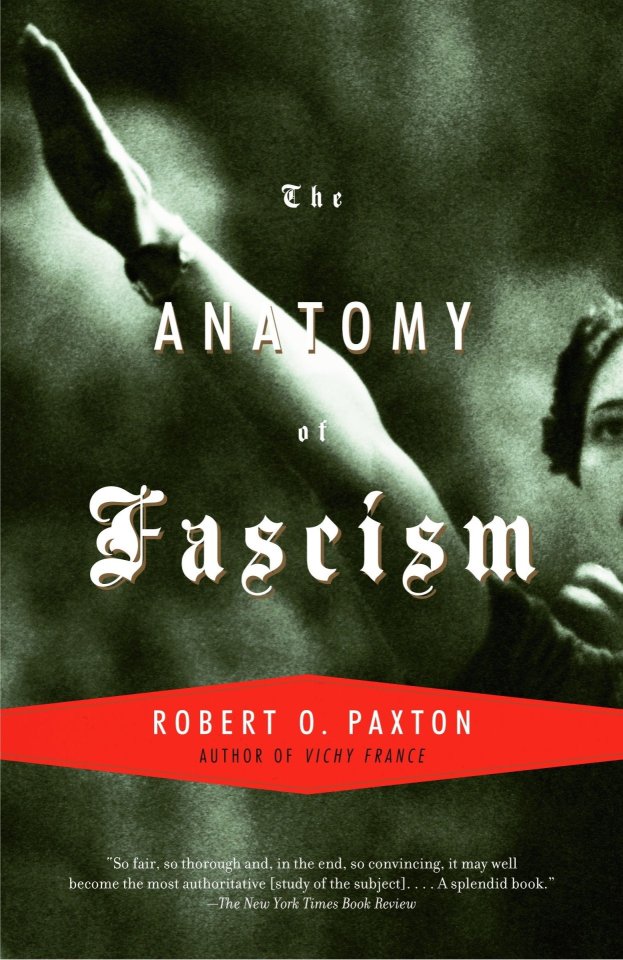
There's also Umberto Eco's The Eternal Fascist
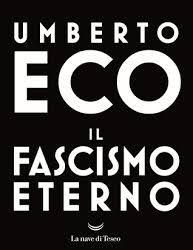
or his "practical list for identifying fascists"
as well as Hannah Arendt's seminal The Origins of Totalitarianism
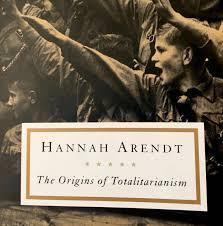
We hope you weren't looking for a simple answer to the complex question of "what is fascism?" Anon, just as we hope you're up to taking our challenge of checking out all of the above so you're curiosity is satisfied and you're well-versed on the topic.
648 notes
·
View notes